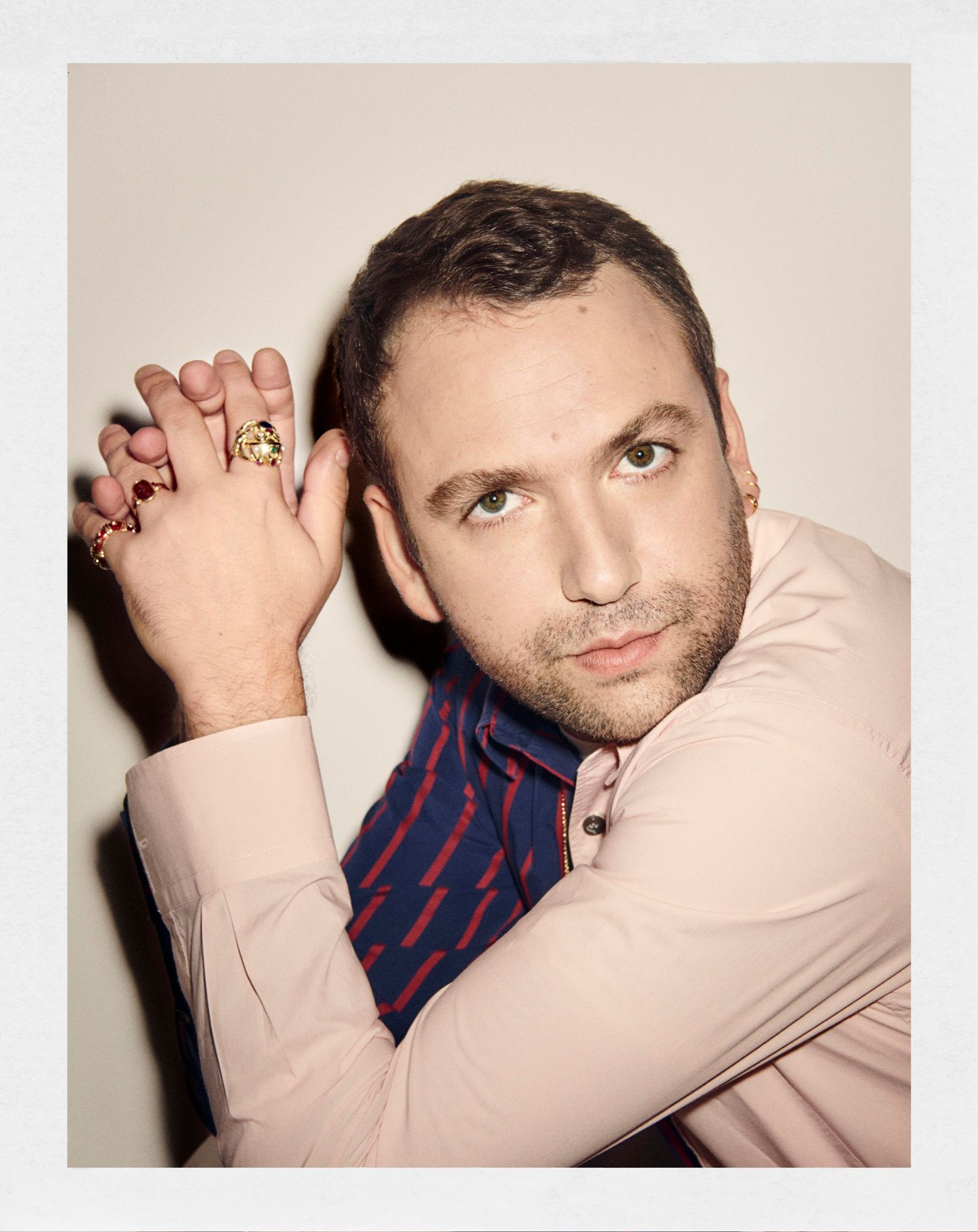Between China and the Arabian peninsula, a “maritime silk road” powers global capitalism – even in the age of the cloud. LALEH KHALILI explains.
|Victoria Camblin
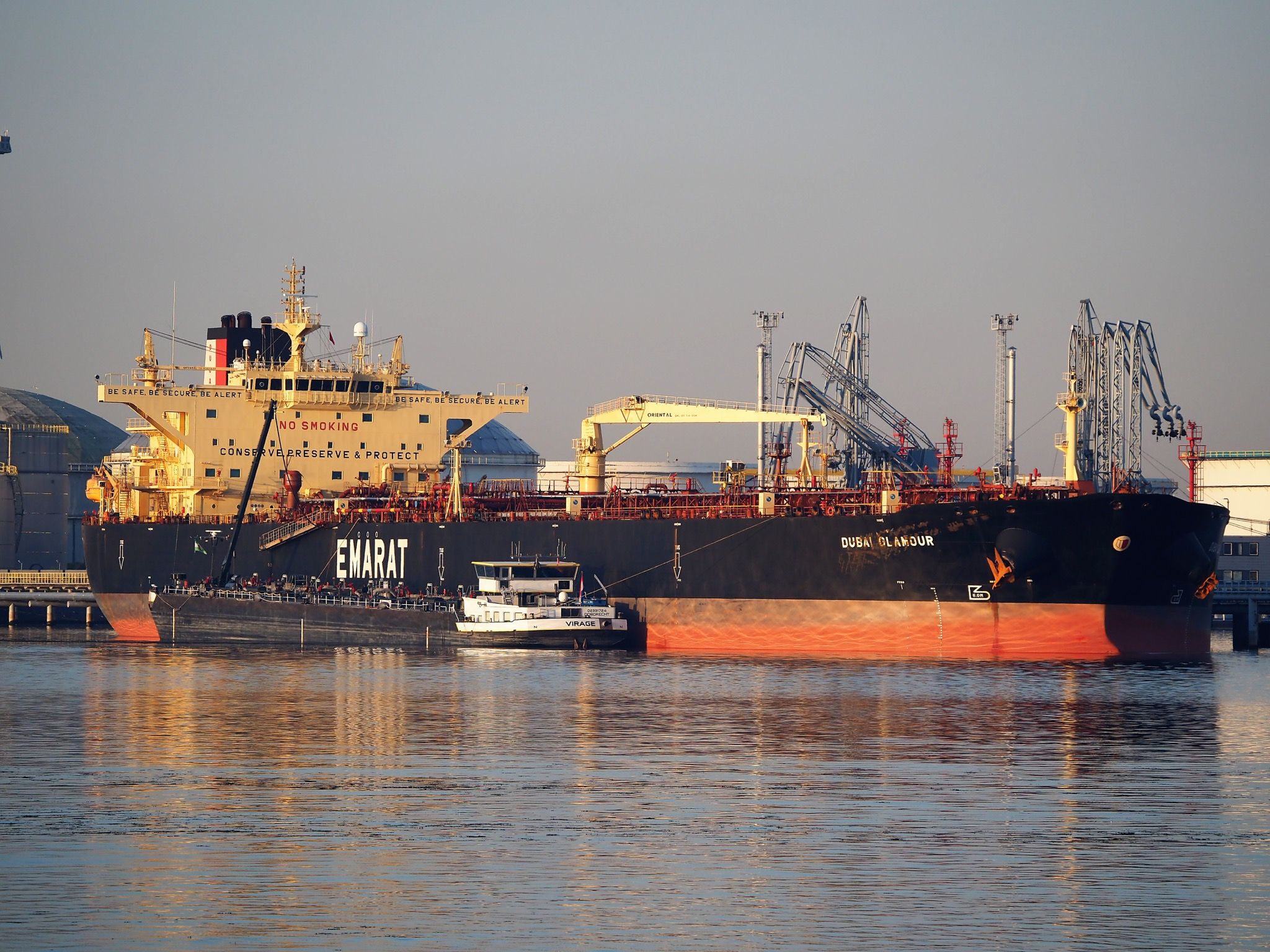
Last weekend, ten members of the Association of Southeast Asian Nations joined China, Japan, South Korea, Australia, and New Zealand as signatories of the Regional Comprehensive Economic Partnership (RCEP) to create the largest free trade deal in the world. Exceeding both the European Union and the US-Mexico-Canada agreement in scale, the new zone comprises nearly one third of the world’s population and 29 percent of its GDP. The RCEP also fuels ongoing discussion of an impending (if not already realized) global turn – not just in economic power but in cultural production and outlook – that puts the Atlantic-centric 20th century firmly in the rearview mirror, and Asia and the Pacific on the immediate path ahead. The heart of this global industrial framework is China: the “factory of the world.” Its blood, LALEH KHALILI explains in Sinews of War and Trade (Verso Books, 2020), is circulated by the Arabian Peninsula, in a vascular system that pumps oil and other raw commodities onto ships to China, where they fuel manufacture before returning – as containers full of goods – to the ports of the Gulf, for redistribution throughout the world.
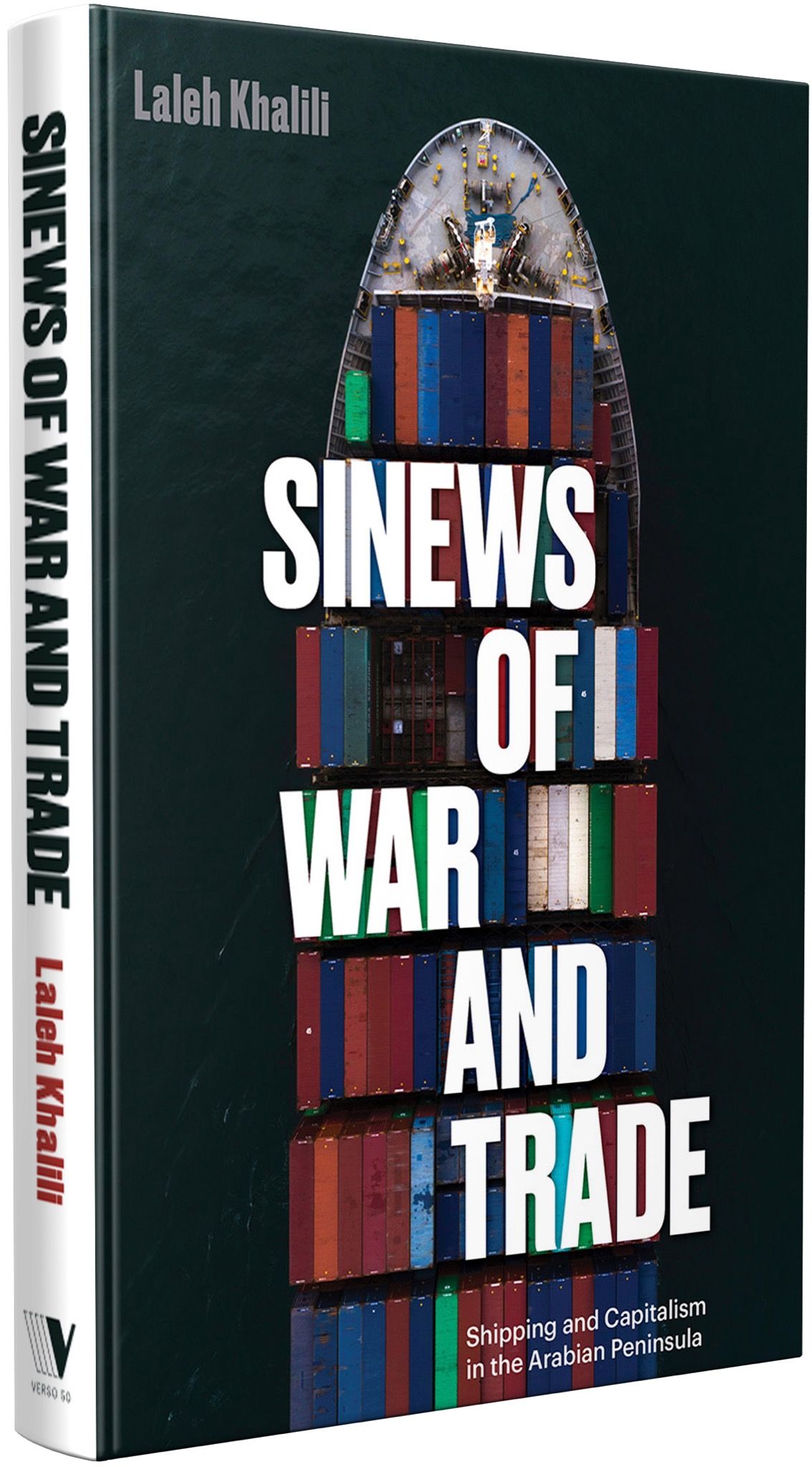
Khalili, professor of international politics at Queen Mary University of London and author of Heroes and Martyrs of Palestine: The Politics of National Commemoration and Time in the Shadows: Confinement in Counterinsurgencies, spoke to 032c executive editor Victoria Camblin as the global shipping industry continued to grapple with constraints brought about by the world-wide pandemic, impacting supply chains in ways that revealed entangled networks of trade not previously considered by most international consumers. While the “maritime Silk Road” Khalili describes in her recent work may be increasingly visible, it is by no means new, its nature and function by no means merely logistical, its motives and impact far from purely economic. Kept alive through this central capitalist artery are colonial regimes, labor hierarchies, and models of production, profit, and law that continue shape how we live, in society and on the planet.
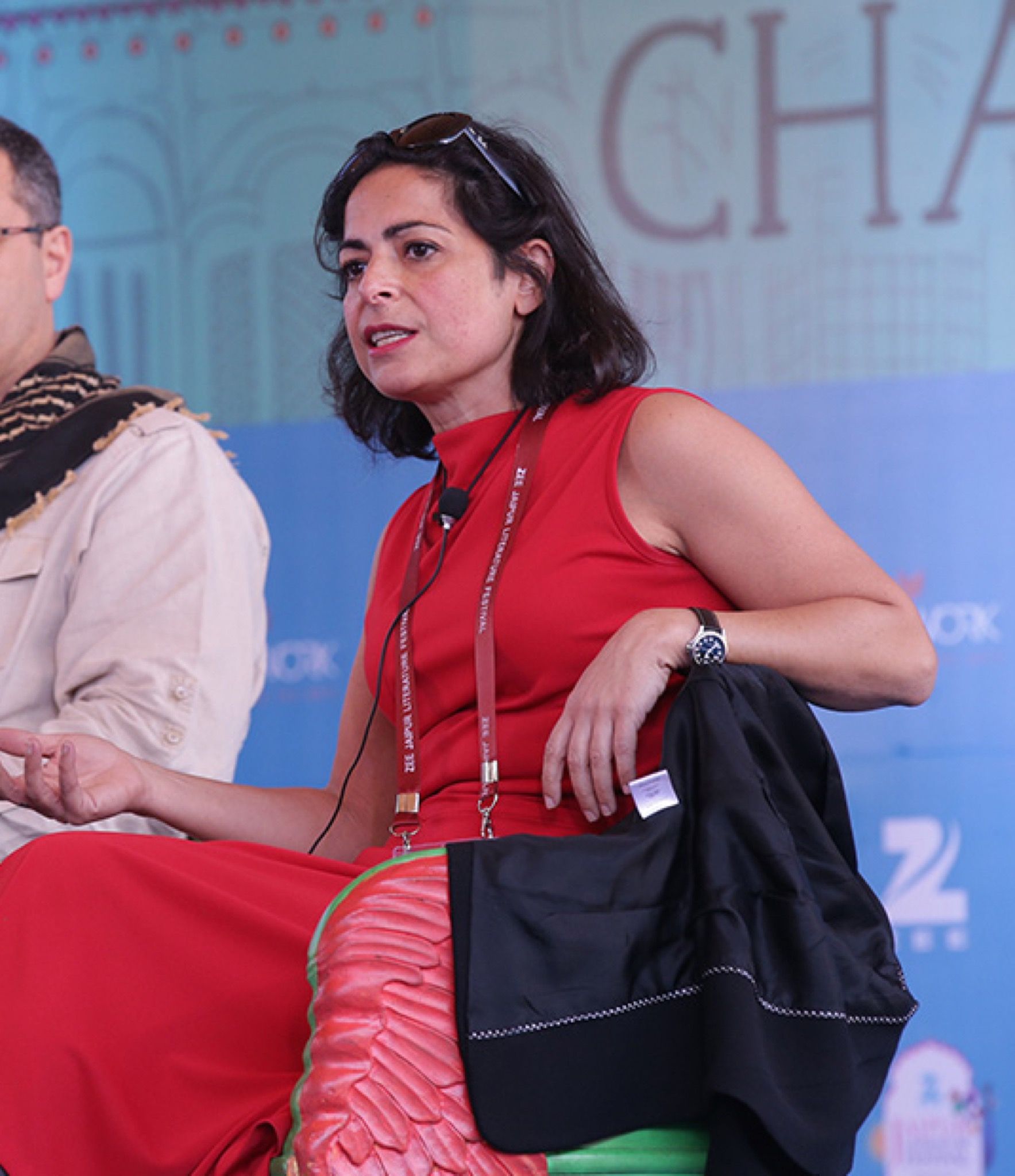
Victoria Camblin: Your book was released in May 2020, with a mission to unveil trade systems that are not necessarily in view of the average consumer – at a time when Covid-19 was also shedding light on these unseen frameworks. The lack of availability of certain products, the types of things you were able to buy and the places you were allowed to buy from, among other things, seemed to make people a bit more aware of trade movements. Do you think this will continue?
Leilah Khalili: When I began my research on this, eight or nine years ago, there were a handful of people who were interested in maritime trade and logistics from a critical perspective, rather than a kind of a management or business perspective. Many people who liked to photograph or film or write about maritime transport were interested in the subject as kind of an aesthetic sublime – awed by the engineering vastness and complexity of this system of trade. And it is massive, both in the things that you see and in the things that are made invisible. It looks massive when you are on a coast somewhere and you see those container ships or tankers, or when you fly over Gibraltar and you see all of those ships waiting to pass. The massive things that are invisible are the routes, the amount of goods that travel – the things that we have difficulty aggregating in our brains. There is a sense of awesomeness and a sense of rupture from the past, which everybody keeps reproducing. What gets lost in the reverence for that massiveness is the human element, the human scale, the historical.
I wanted to situate a work that dealt with the invisibility of the mega-ness of trade, and with the invisibility of the Arabian Peninsula. Generally people talk about the Arab Middle East in terms of ridiculous stereotypes of repression, whether it’s internal, when it comes to sex, or external, when it comes to states, or bling, or backwardness, and sometimes it comes even from the Left. What struck me the very first time I arrived in Dubai was the similarity, of the smells and the feel and the sense of the city with the Iran in which I’d grown up. That also brings stuff down to scale. My vision of Dubai wasn’t the city of incredible skyscrapers that are the tallest in the world, or that look like sails, or where if you go and have a coffee, a coffee costs $20. The city that I came to know had grown around the harbor, one in which trade had taken place for centuries, which had connections to East Africa and South Asia and across the water to Iran, and down the coast to other Arab States.
I’m interested in this notion of port cities sharing certain qualities – more than a shared body of water, it’s an atmosphere of trade, of facing outward. Port cities are diverse by nature, socio-economically and in terms of internationalism, but there is also an aesthetics or mythology of promiscuity or lawlessness, or of acceptance of non-conformity. You note in the book a shift of visibility, with actual port activities being moved from these urban centers to off-grid, barbed-wire compounds that are not in view of the consumer or the local resident. Will this endanger the port city we are talking about?
I would like to draw a comparison, this time between Dubai and Marseille. Marseille is a city that has intense connections with the Arab world across the water, but also with the Eastern Mediterranean. It is the home of the third-largest shipping company in the world, CMA CGM, which was established by a Syrian-Lebanese family and whose routes, very specifically, incorporate the Arab world in ways that many other shipping companies don’t. Marseille and Dubai have very similar kinds of histories. Both are major trading posts, and have been for centuries. In the 19th century, both cities had harbors that were sheltered and could take trading boats, but that then became tourist destinations. Around the same exact time, both places constructed mega-ports that were 40 to 50 miles away from the original port. The vast majority of the world’s ports in cities that have had long histories of being port cities have followed this pattern. When this happens, the life of the port changes to some degree. If the turnaround time for your ship is only 18 hours – down from an average of 22 to 24 hours since I started researching – and the port is 40 miles outside of the city, and you have to go through border control to go out and get a taxi to go to the center of the city, then the sailors that are coming in on the mega-ships are not going to be able to make it. And I do wonder about how much that is actually also an intentional function of moving the ports outside of cities. Marseille used to be a major site of brothels and bars, where seafarers drank and ate and debauched and also politically mobilized – it was cosmopolitan, but not in the way that we think of cosmopolitanism. It was quite a violent place, it was quite a racist place, it was quite an exploitative place. But it was worldly. Because of their rowdiness, because of their “outward-lookingness,” their “polyglotness,” port cities often attract people from the interior who are looking outwards and who are looking to escape to sea.
“The massive things that are invisible are the routes, the amount of goods that travel – the things that we have difficulty aggregating in our brains. What gets lost in the reverence for that massiveness is the human element, the human scale, the historical.”
The city center is much wealthier now, too. The new gentry does not want to see bar fights; they want to see monolithic vessels glide in and disappear from view as though unmanned. This false division of where the people are and where the stuff is similar to the vocabulary of the cloud. That unmanned cargo ship has to do with the perception of digital commerce and the feeling that the products we order online just manifest in front of the doorstep with the hands-off perception of digitized commerce. Of course, there are laborers, bodies, involved at every stage of the process.
One quick statistic that also gets at exactly what you’re talking about: In 40 of the 50 states in the US, the number one occupation is now “logistics driver.” The way we think about digital delivery, or about e-commerce – which is enormously important now to the global economy – ignores the fact that being a delivery driver is the number one occupation. Whenever people talk about the virtual world and imagine it to all happen in the cloud, they literally think of fluffy clouds up there, a virtual or ephemeral thing, whereas the cloud is an enormous warehouse full of servers, in a data center that consumes enormous amounts of electricity and water, produces enormous amounts of waste, and is connected to the rest of the world through extremely expensively laid cables, often underwater. Trying to hide or to shield the human from this, to make it seem like everything is hygienic and automatic, works to the benefit of a logistics company like Amazon, who would like all of us to think that all of this happens in a clean and non-human way.
The financial world is also seen like this. Yet the microsecond of difference that makes your cable faster, because it is laid more directly, rather than going around a corner, makes a difference in how quickly you can put in bids on a market instrument. That hard concrete, the fleshy material detail, is what I really wanted to get at.
There is this idea of the of the sea existing as some kind of natural power that man is at the mercy of and has no hold over, when of course, as you say, there are a bunch of cables at the bottom of it, there are extremely massive, intricate routes planned out all over it, and there’s a ton of stuff and people floating around out there. Is the maritime context a more ancient version of this mythology that now buoys the way we see financial markets and the cloud: as abstractions, uncontrollable forces beyond human influence?
If you think about Micronesian peoples that actually used to row canoes across the Indian Ocean, which is vast, and imagine what they must’ve felt like being under 10 meter waves, or coming across pods of whales, you can see why the sea is turned into an abstraction. But, the sea is an incredibly material place. There are fights over bits of it, because there are people who want to drill under water. Hanging out in the wheel room, where they “drive” the ship, you see these Admiralty charts. Originally produced as a tool of empire by the British, they were later put to use in commercial ventures, in the process of privatization that Margaret Thatcher brought into Britain.
What’s interesting about those Admiralty charts is that they don’t have any of that romanticism about them. They’re commercial tools and have all these notations on them about where munitions have been dumped; or where there’s a lot of pipelines or cables; or where it’s so shallow that you don’t want to drop anchor; or where to expect to see whales; or where your magnetic north might be fucked up because there are magnetic anomalies under the sea in this area. These notations turn the sea from this awesome mystery of God into something really quite banal and functional by making it seem more vanilla and controllable.
We also love a moment where we can say, “Nature’s here!” Covid brought back this idea that Nature will strike back if you neglect her, and gave that satisfaction of witnessing resistance from a force we perceived to be outside of humanity.
There was one meme going around, showing these colorful parrots sitting on a tree somewhere, and it said underneath, “Nature’s healing, London pigeons have returned to their natural colour.” I just loved that because, of course, what’s destroying us is man-made. Covid would not have spread the way it did, had it not been for industrial farming, airplanes, and cruise ships. This terrifying nature that is killing us – we created it. Climate change, coastal erosion, rising seas that are melting ice floes in the Arctic – we’ve done it to ourselves. Marx said that capitalism contains the seeds of its own destruction. That’s exactly what’s happening here.
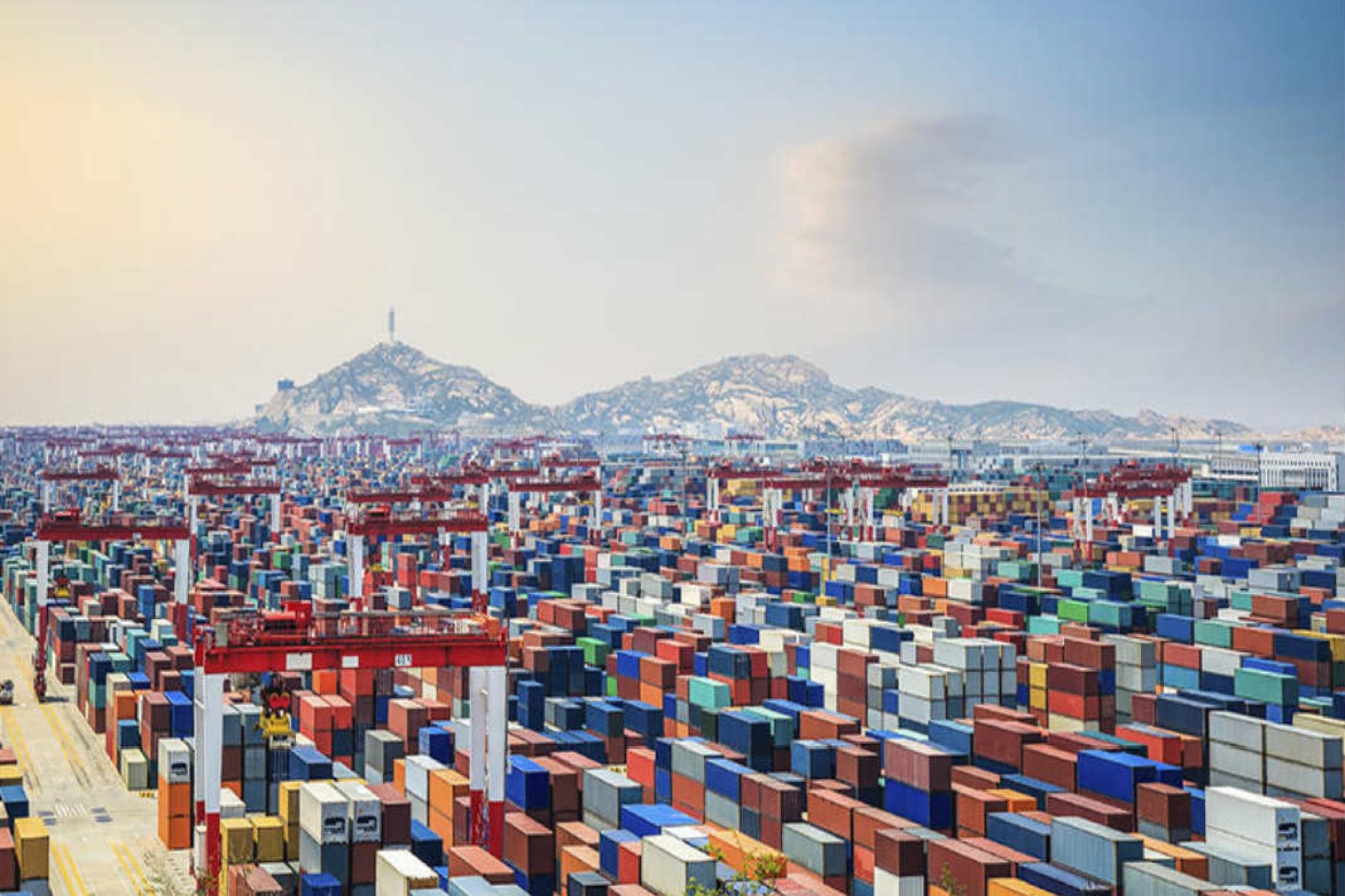
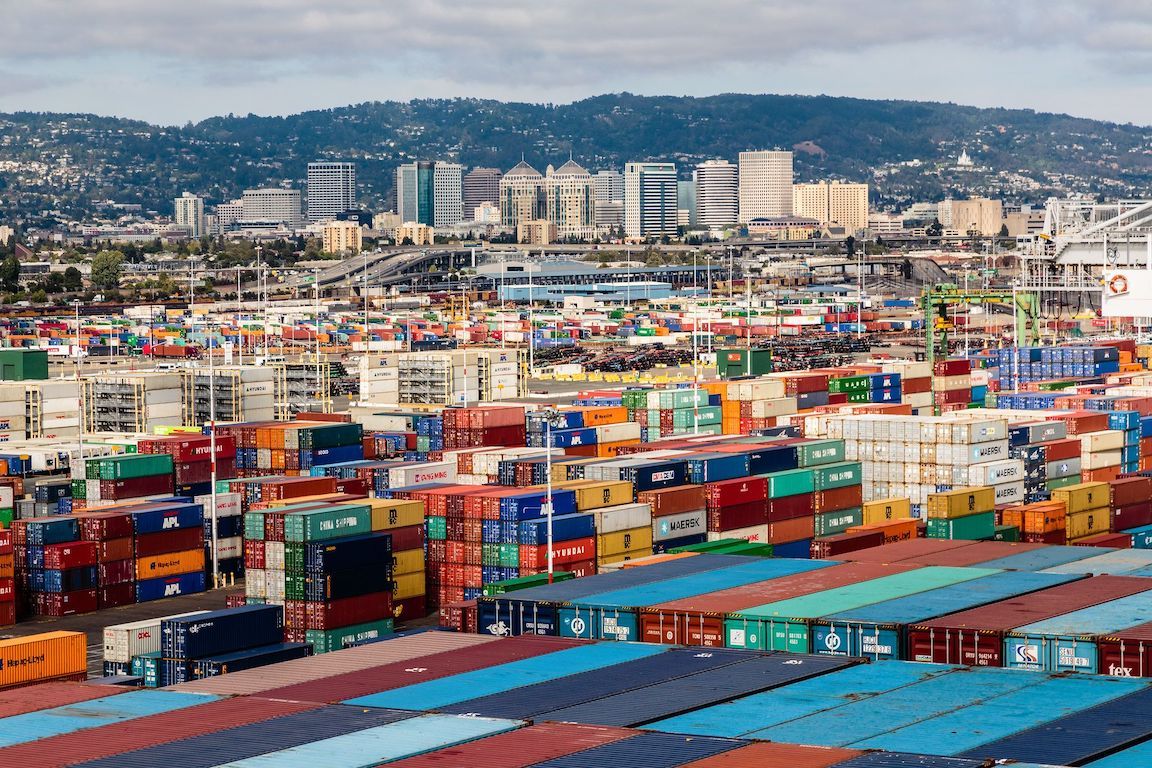
The material versus “the digital,” man versus nature – these dualities are fake opposites that we maintain in the name of capitalism and our perceived enlightenment. Aboard a seafaring vessel, you have the upper deck versus “steerage,” where the workers labor in terrible windowless conditions. In the Hollywood version, steerage is the libidinal space where the drinking, sex, and dancing happens – it’s like a colonial mirror, when Rose goes below deck to party with Jack in Titanic. But you can’t go upstairs and you are the first to die if anything goes wrong.
From the 1950s onward – the moment in which ships started having far fewer people working on them – people started thinking about the ship as a total institution, where you work and you live and you cannot leave. A hospital or an insane asylum or a prison – these are all total institutions. It becomes a kind of copy of forms of incarceration, but also, a kind of microcosm of global disparities, through mechanisms of wage control and labor discipline.
Is the ship, the vessel itself, an apt illustration of how people inhabit the system everywhere?
Global hierarchy is written into the physical shape of the ship: the captain is up top with an entire floor to himself, then the passengers and the top officers are on the next floor down, then you begin to have shared rooms on lower levels. And then when you get toward the bottom, there are four to five people sharing a cabin. Cruise ships that carry something like 5,000 passengers will also have another 1,000 people working on them. That’s where the real steerage is, where people are six or eight to a cabin. When Covid hit, we all heard about these rich cruise ship passengers that were sick and had to be taken off. But what was forgotten was that often workers had gotten it far worse, and that it was really widespread – 60, 70 percent of them had Covid, and they’re stuck onboard ships that cannot come into ports. I didn’t write about cruise ships, but the cruise ship ended up becoming the most horrendous metaphor of life in late stage capitalism.
Aren’t there tens of thousands of workers out there stranded on boats because of Covid?
Hundreds of thousands, not tens. According to an internationally signed treaty, they’re required to spend no more than 11 months on board a ship. And yet there are people that have been onboard ships for, 14, 15 months. Now, some ports are letting up and letting people get off the ships. The Port of Singapore requires testing for Covid, and new seafarers can board ships there. But ship owners have been so eager to get work going again that they have been faking the test. So those kinds of regulations, even when they’re very minimal, are being circumvented.
Speaking of this carceral model, do you see any resonance here with the calls for racial justice, police reform, and abolition that followed the murder of George Floyd and others in police custody? You have a certain amount of space in the book devoted to protests and uprisings, specifically those in the decolonial period of the 1950s and 1960s, and you compare these movements to Occupy and trade unions.
In the 1960s, labor protests were quite frequent in the Arabian Peninsula. They still happen, at extraordinary cost to the migrant workers, but the contextual conditions were different. Number one, many of those port workers were, at the time, Arab workers, so there was a sense of interconnection even among people from different places. Because they were Arab workers, they had connections to the communities on land. In some instances, they were living in workers’ barracks; in others they were living in cities as they constructed ports. I think those connections made an enormous amount of difference to their ability to mobilize support. When dockers in Aden would go on strike, the street sweepers would go on strike alongside them, or merchants might support them or provide food, for example. Also, being able to pressure the state played a very important role in the ability to affect change. In a lot of these stories I tell, ultimately those fights were lost. If the protesters were protesting against corporations, the state would often come down really hard in support of corporations, sending the police in and inflicting carceral and police violence against the protesters.
Where they succeeded was where they were able to reshape state legal apparatuses and local social relations. Only valorizing organization around labor, or the organization of labor, doesn’t seem to work particularly well, either for the short term or for the sort of long-term effects we hope for. What matters is situating those forms of labor organization by unions in and alongside connections to community groups and organizations that are fighting for social justice in other ways, building coalitions and alliances that can be mobilized. And it was those social relations and legal apparatuses that both the colonial powers and the ruling families there wanted to unravel.
“If you look at the parameters within which global trade operates, it’s still a world that is defined by North Atlantic engineering and accounting standards and laws devised in Europe and North America. Trade still happens in dollars. And when the US wants to sanction somebody, unfortunately, everybody else still follows.”
I assume these colonial and ruling powers you mention would be happy with the replacement, which you describe in the book, of unions with transnational NGOs, which must have a bigger degree of removal from the communities that they’re supporting.
I don’t want to romanticize unions – they mobilized on behalf of workers, but often also had very exclusionary practices, and were actually quite racist instruments in Britain, for example. But organizational solidarity, as opposed to, or alongside, spontaneous uprisings or direct action is really necessary to create the right kinds of networks. It has been fascinating to see the alternate wildcat unions emerging now, for example among nurses and teachers in the US – organizational forms where women and people of color have led the protests.
Unfortunately, the working conditions onboard ships don’t lend themselves to that kind of organizing. Aside from the fact that the wage structures and working conditions tend to be very bifurcated because of the isolation and the shrinking number of people onboard ships – on a ship the size of a city you might have 35 people – the ability to form a collective, to organize around something, is hampered. What you end up having is a rise in humanitarian organizations or NGOs, rather than the kinds of labor-disruptive organizations that are associated with unions.
It seems there is finally a bit more awareness now about the connection between, for example, the colonial plantation economy upon which the US was built – for which maritime trade and ports were of course pivotal – and racist institutional violence in America.
The reason we haven’t quite figured out how to overcome racialization is because it has done what it intended to do, which is to divide different kinds of people, create hierarchies to exploit them in a differential way, and form enmities between those who would ordinarily have been comrades.
Again speaking of these constructed oppositions, people in North America and Europe are now talking about how “the future belongs to China” or “the future is Asian.” But does looking at maritime trade offer a different perspective of global commerce, which doesn’t really have the “centers” or polarities people think it has?
One thing this touches on is the anxiety that people in the US feel right now about the rise of China as a potential rival in commerce, the economy, and the military. China is home to the world’s biggest ports and the biggest port managers, and some of the biggest shipping companies – and the US doesn’t even figure on any of those lists. Despite that, if you look at the parameters within which global trade operates, it’s still a world that is defined by North Atlantic engineering and accounting standards and laws devised in Europe and North America. Trade still happens in dollars. I think that’s really important to acknowledge. The US might be in decline, and Trump may be eager to dismantle the kind of liberal institutions that helped the economy, in absolute terms. It still has the biggest military, its military spending is still more than the next nine countries combined. And when the US wants to sanction somebody, unfortunately, everybody else still follows.
China is, obviously, becoming a global powerhouse. Its investments and infrastructure within the country, domestically, are now at a place where they have incorporated far reaches of the country – sometimes in incredibly violent ways – so attention is now being paid to taking the surplus capital that is coming out of the economy and investing it in forming networks of trade.
Such as Belt and Road, which connects China to Europe over land.
We see this in land-based connections, for example with the Chinese and Pakistan Economic Corridor (CPEC), which requires roads and train lines and pipelines to be built. But it is also a maritime silk road. This entails lending huge amounts of money to some of these ports and when they can’t pay, taking over very long-term concessions. Not yet militarized in the way that it was by European imperial powers in the 17th and 18th centuries, but it might become like that. Small states are also embracing China as a kind of a balancing force against some of the older masters, whether they’re the French or the British or the Americans. Much like the imperial forces of the 19th century, China extracts the kinds of raw commodities that it needs for its global factories at some of these ports, and at others, its goods are coming and taking over the markets. That is how trade works, and China is operating within a system the British, and then the Americans, set up and protected.
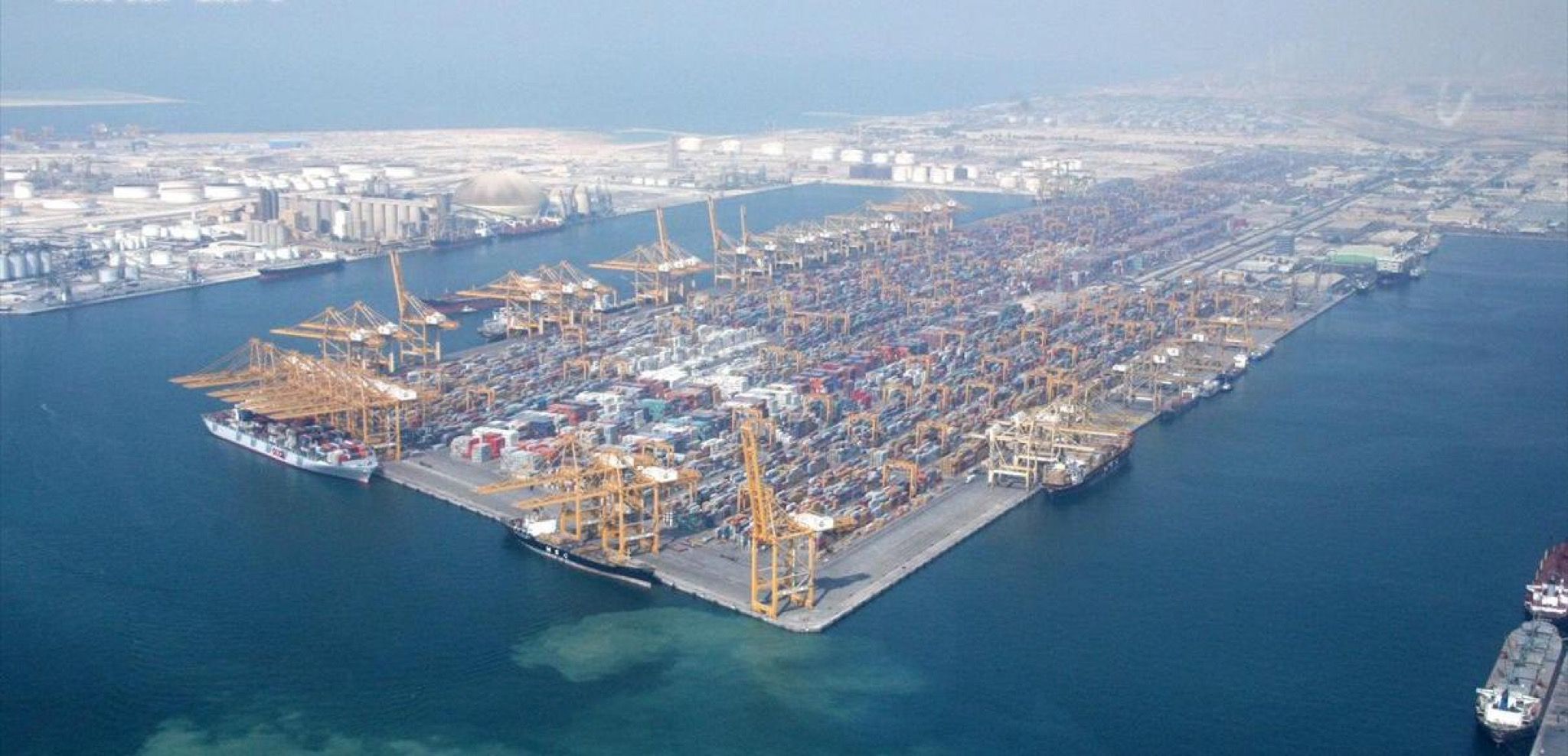
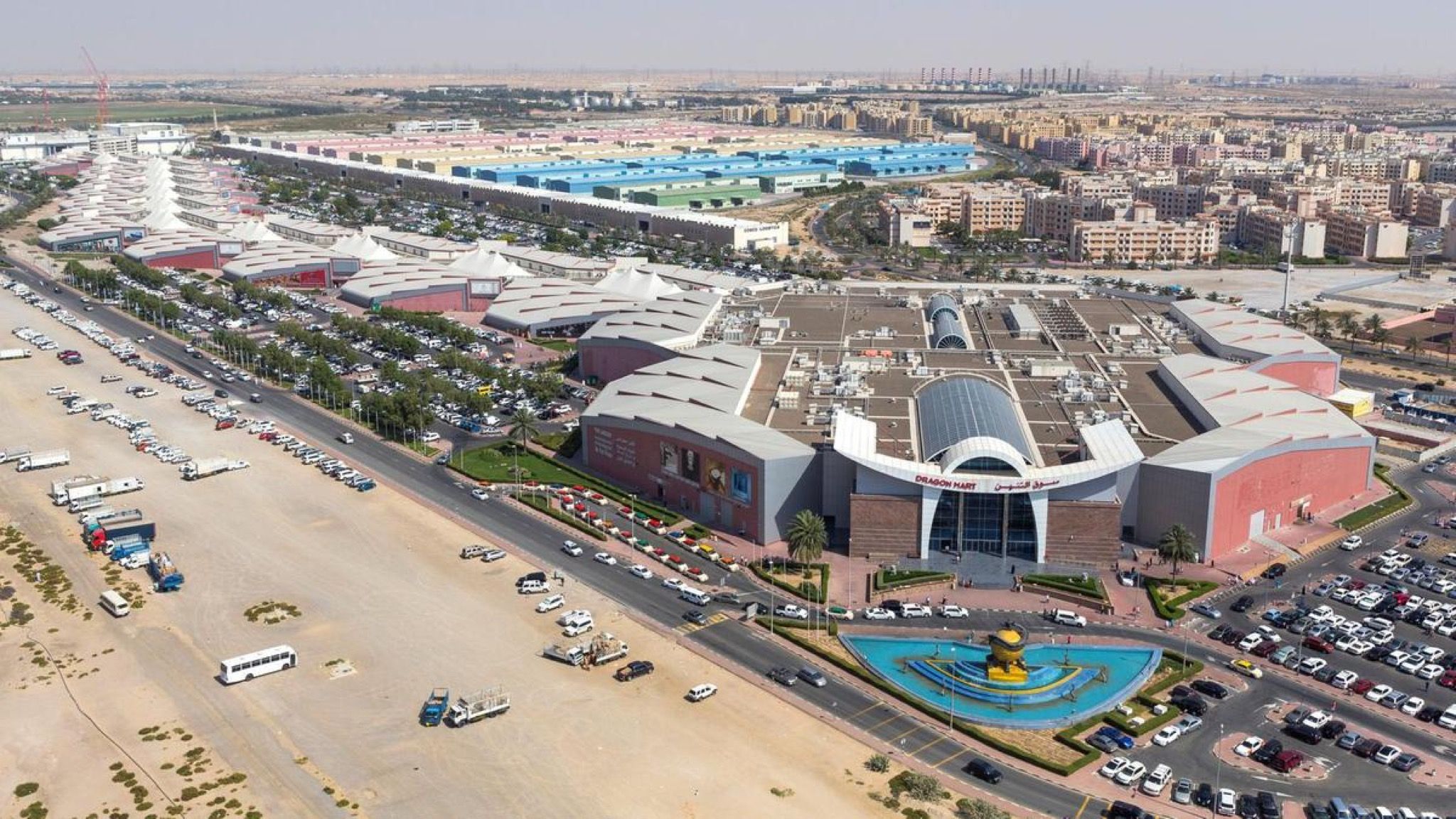
“Whenever people talk about the virtual world and imagine it to all happen in the cloud, they literally think of fluffy clouds up there, a virtual or ephemeral thing, whereas the cloud is an enormous warehouse full of servers …”
Is the constant discussion of these shifts of global power from one country to another actually taking us away from the acknowledgment of a very widespread system of capital and violent labor policies that is in many cases much greater than individual states themselves?
I think that they do have some agency here. Take Erik Prince, the evil villain of Blackwater, who went off to Abu Dhabi in order to avoid prosecution in the US. He set up a logistics security firm in the UAE that Chinese parastatal organizations invested in and that provides militarized security to Chinese businesses in East Africa. Like the late 19th century mercenary chancers who sold their services to any empire that would buy them. It goes to show that capitalism is truly global – a completely amoral system in which the primary good is considered to be the accumulation of capital at whatever cost people are willing to bear.
The East Africans that are being exploited are being left out of the story when we focus on that. There’s quite a lot of pushback now in various ports, for example in Mombasa and a couple other places, where there is some apprehension about China coming in and descending in ways that are reminiscent of the past. But again, in these forms of geopolitics that we’re talking about, we’ve lost sight of who’s exploited. The story needs to be brought down to that human scale for us to actually understand the real import of it.
Violence is something touched upon in the book not only from as a tool of the oppressive systems being enforced, but as a tool in instances of uprisings, too.
I would rather that we were able to have a fully nonviolent protest in which nobody got hurt. But the kinds of transformations that happen often inevitably generate that kind of violence. It is what Fanon said:
The process of decolonization often echoes the violence that the colonizers used.
Credits
- Interview: Victoria Camblin
